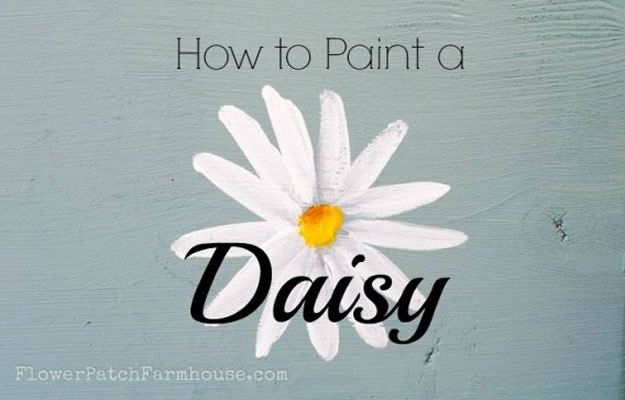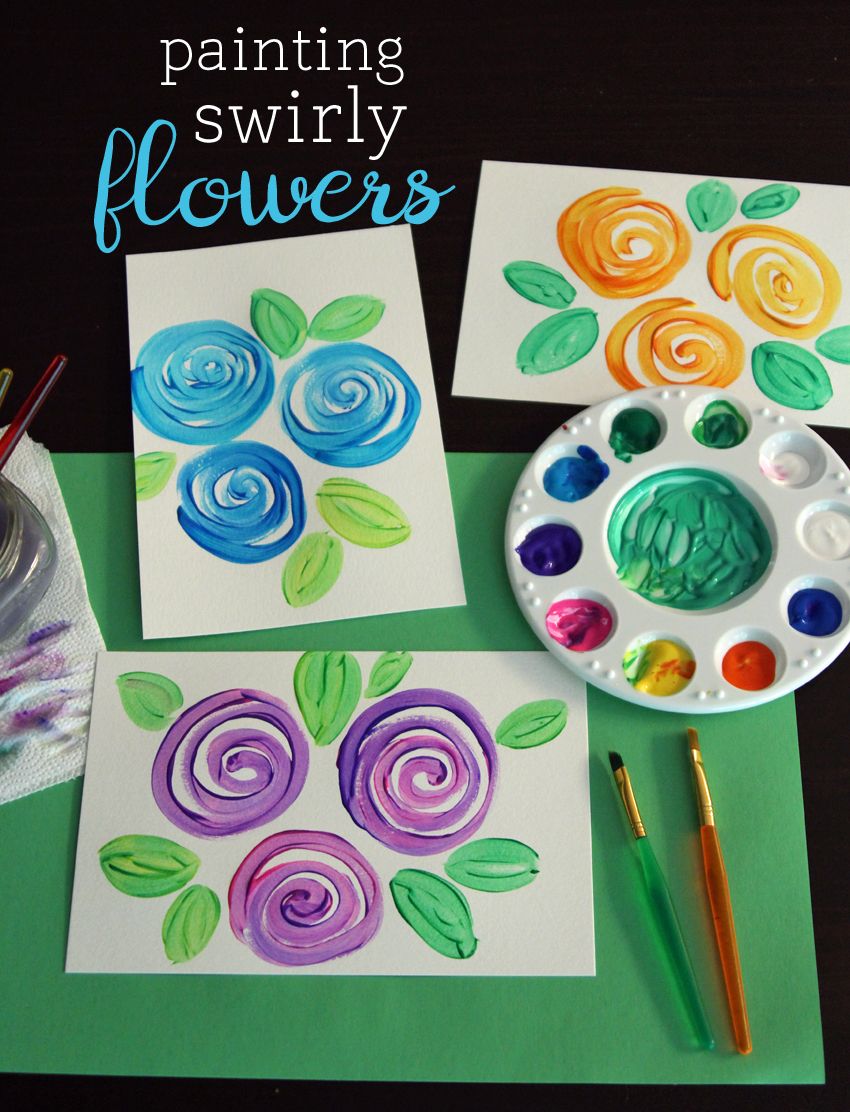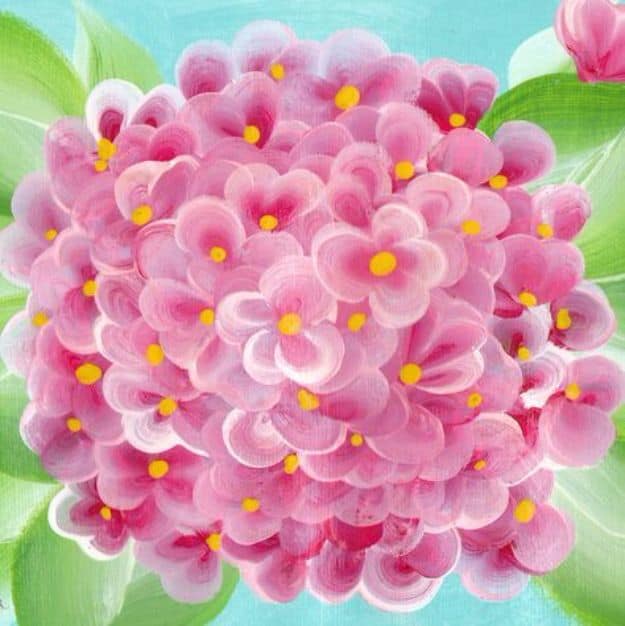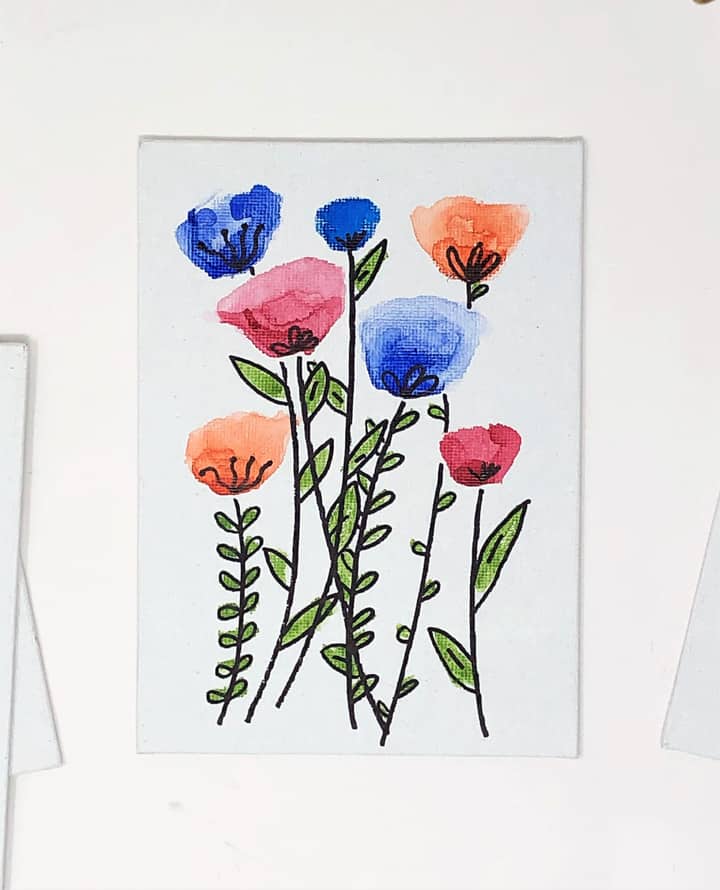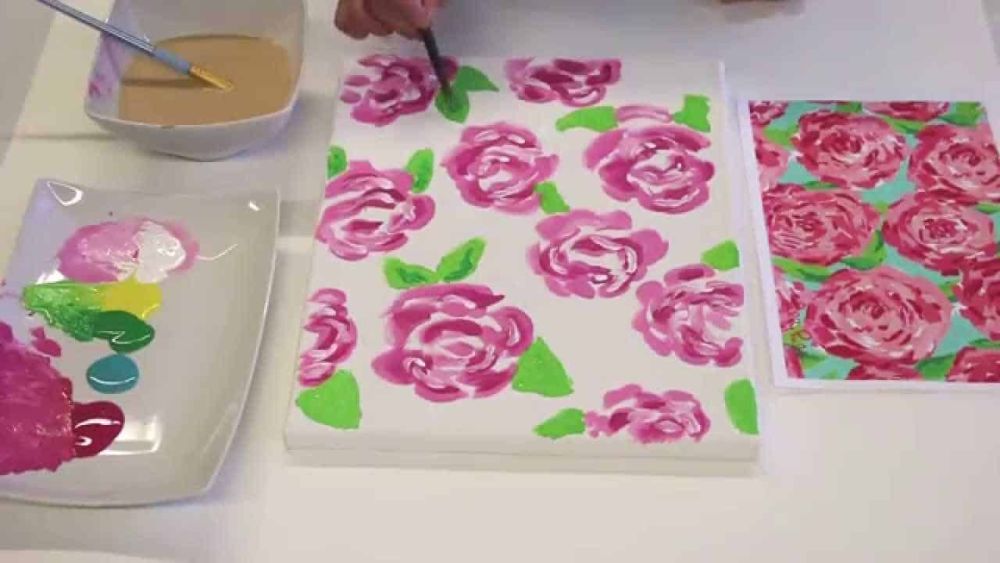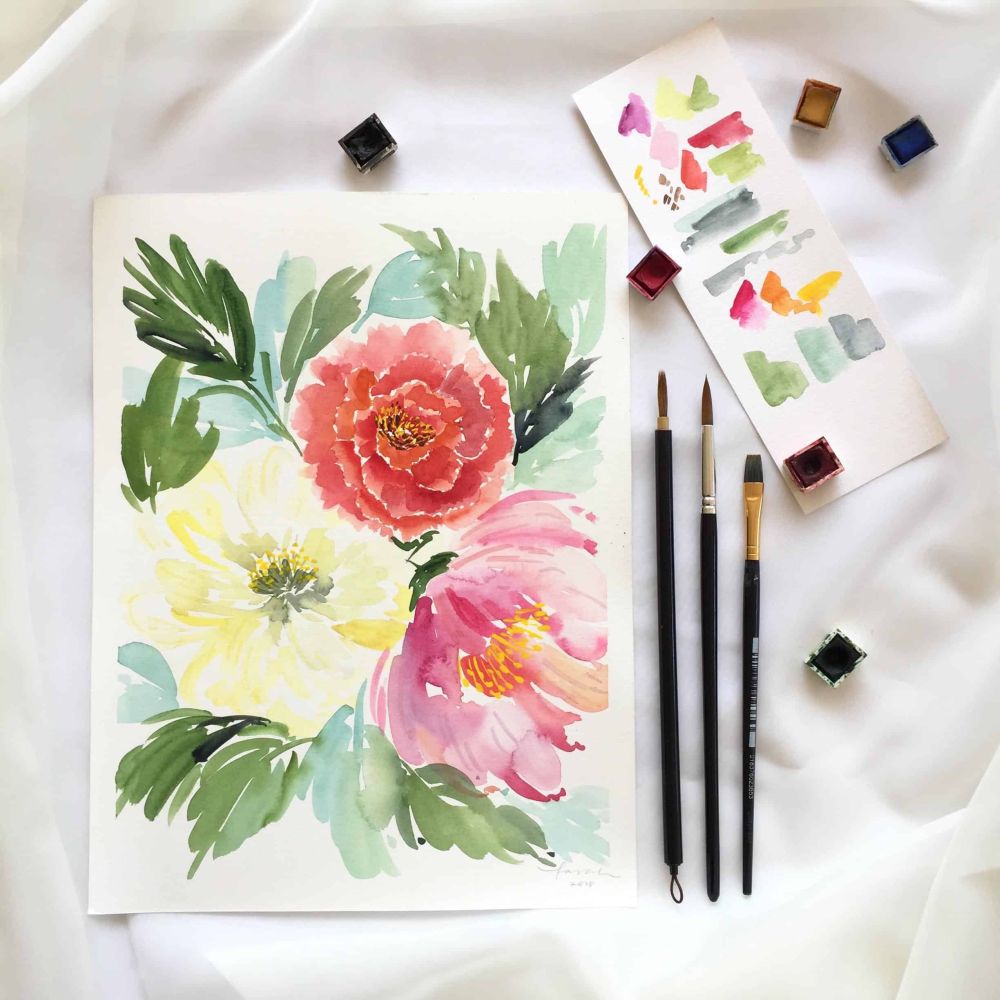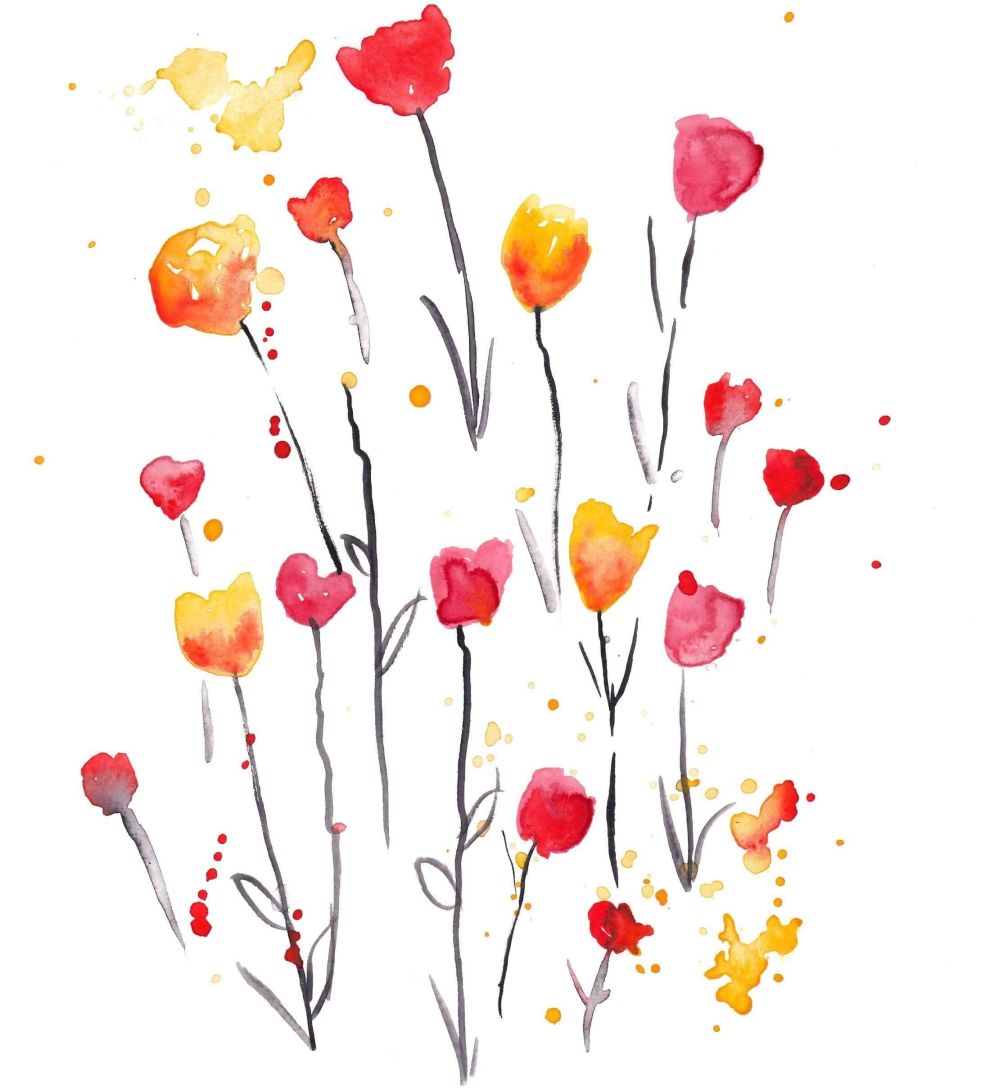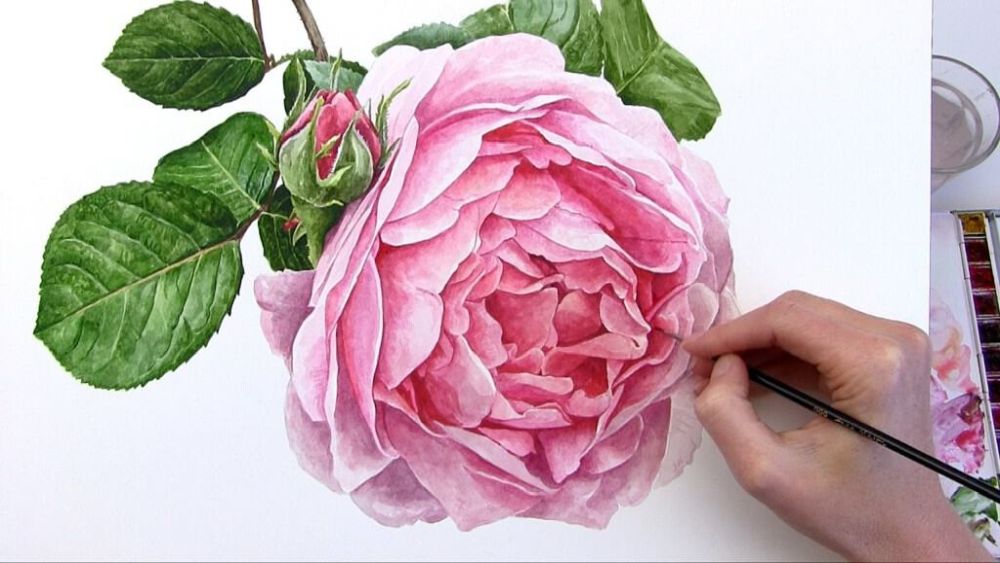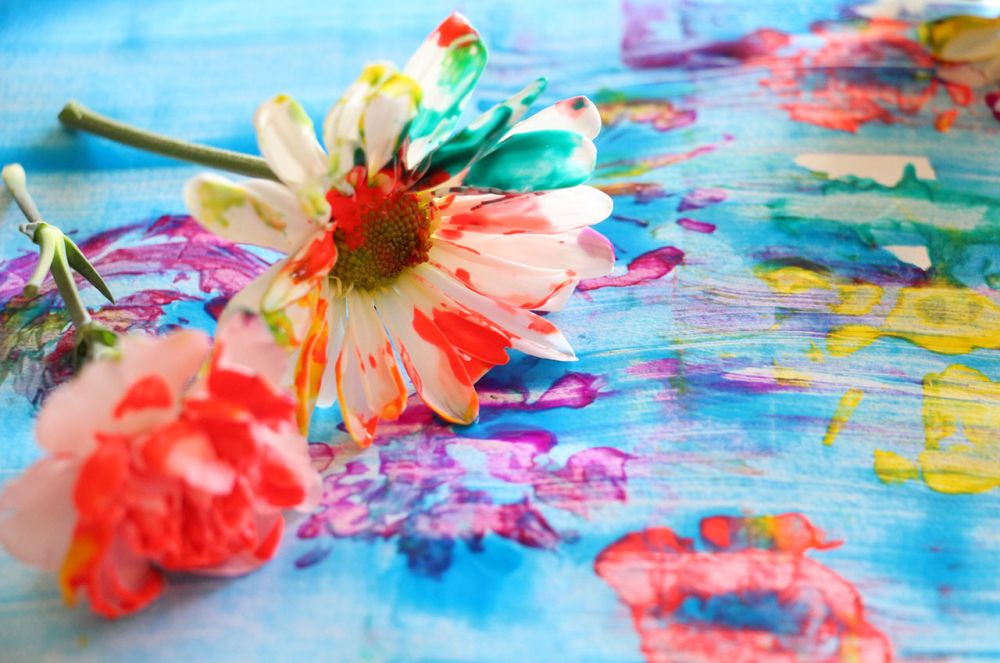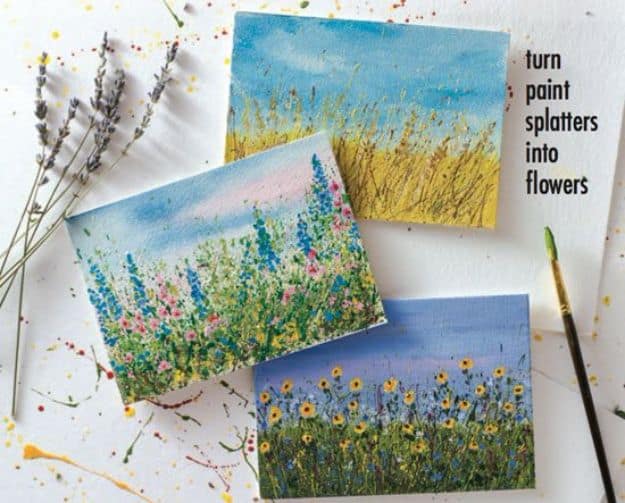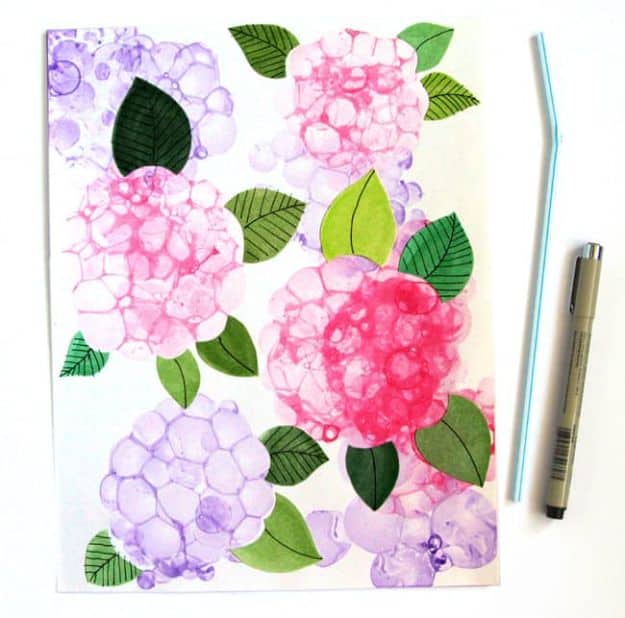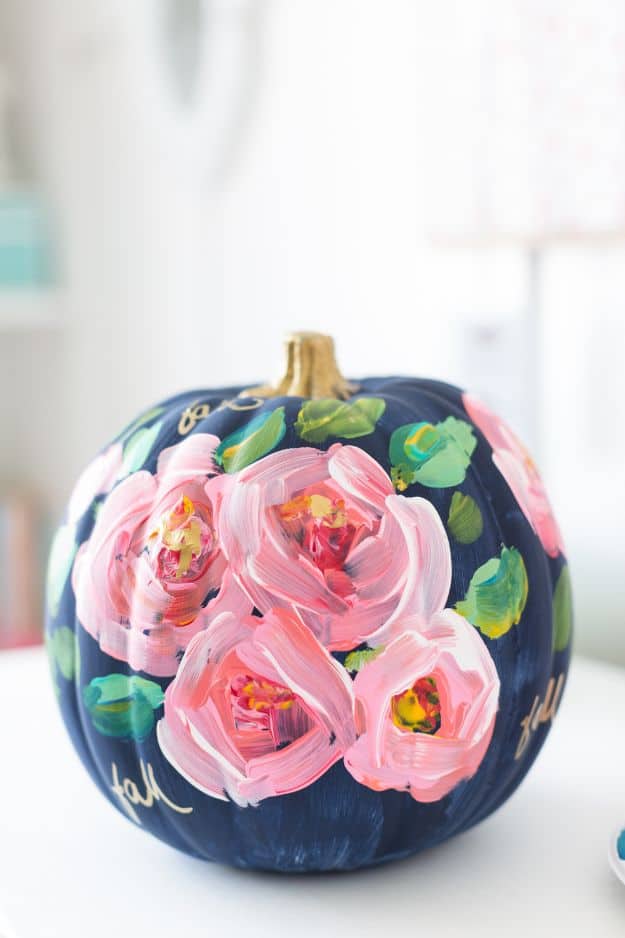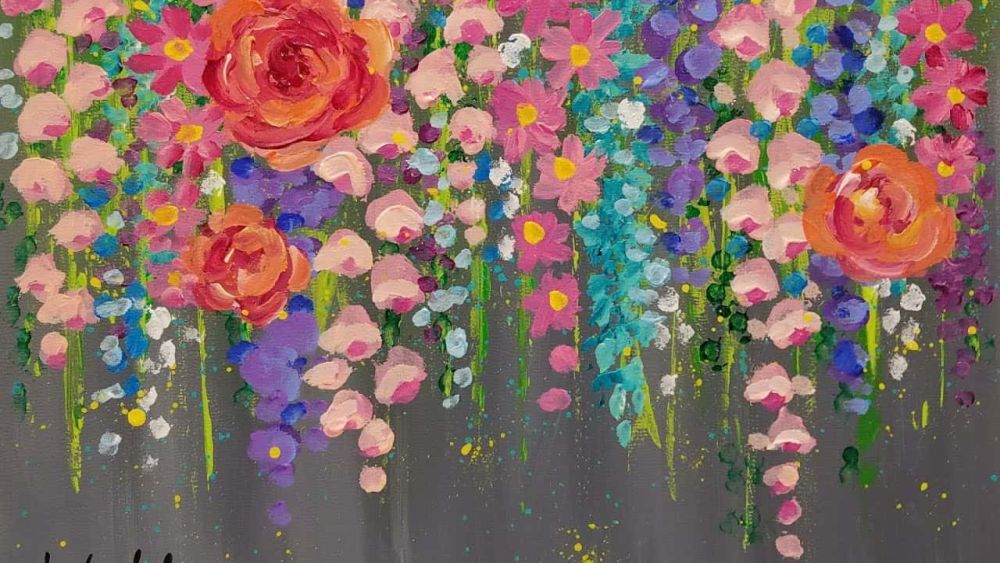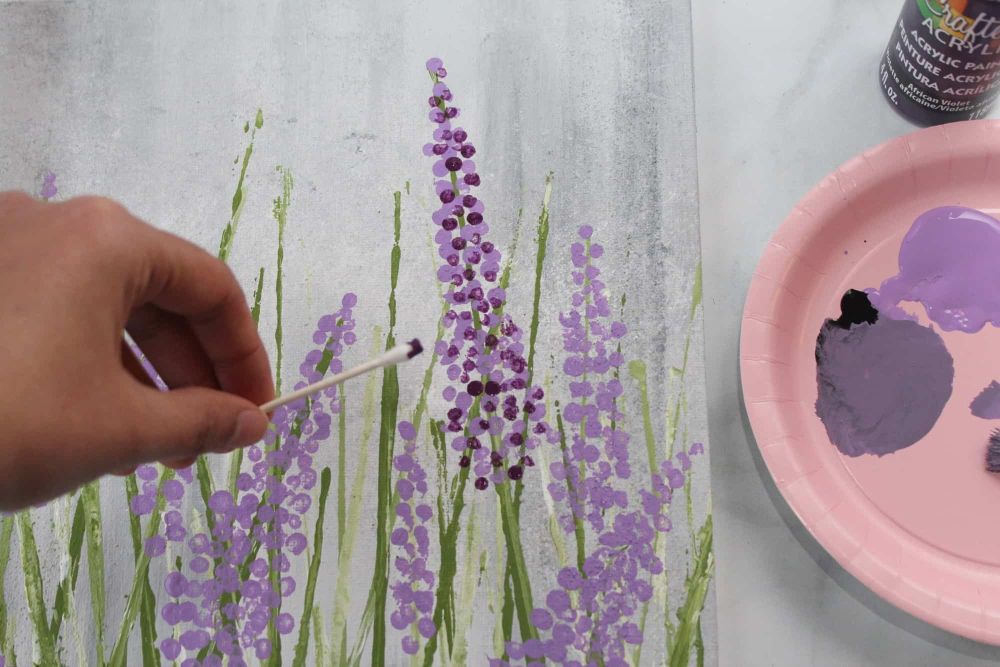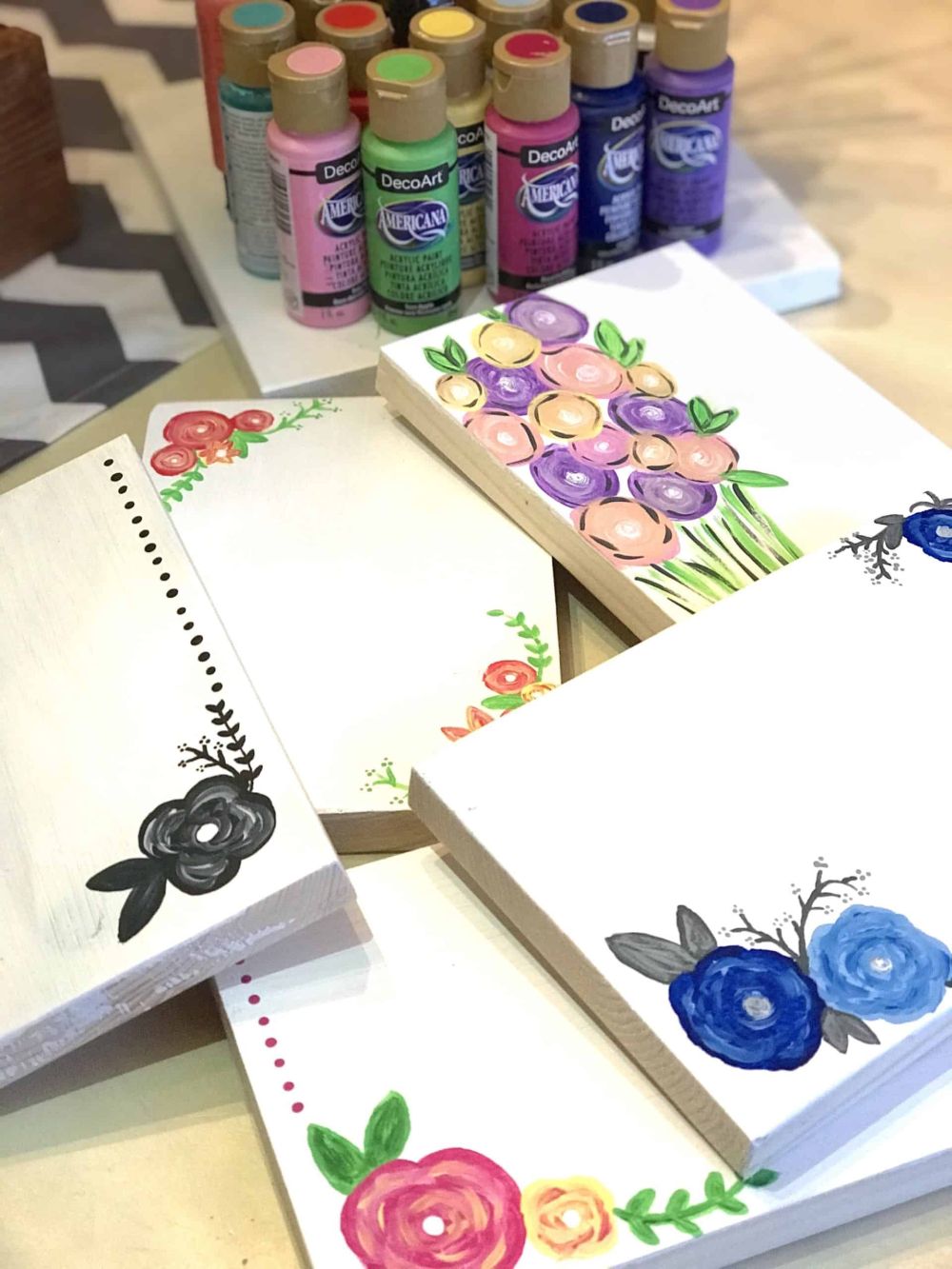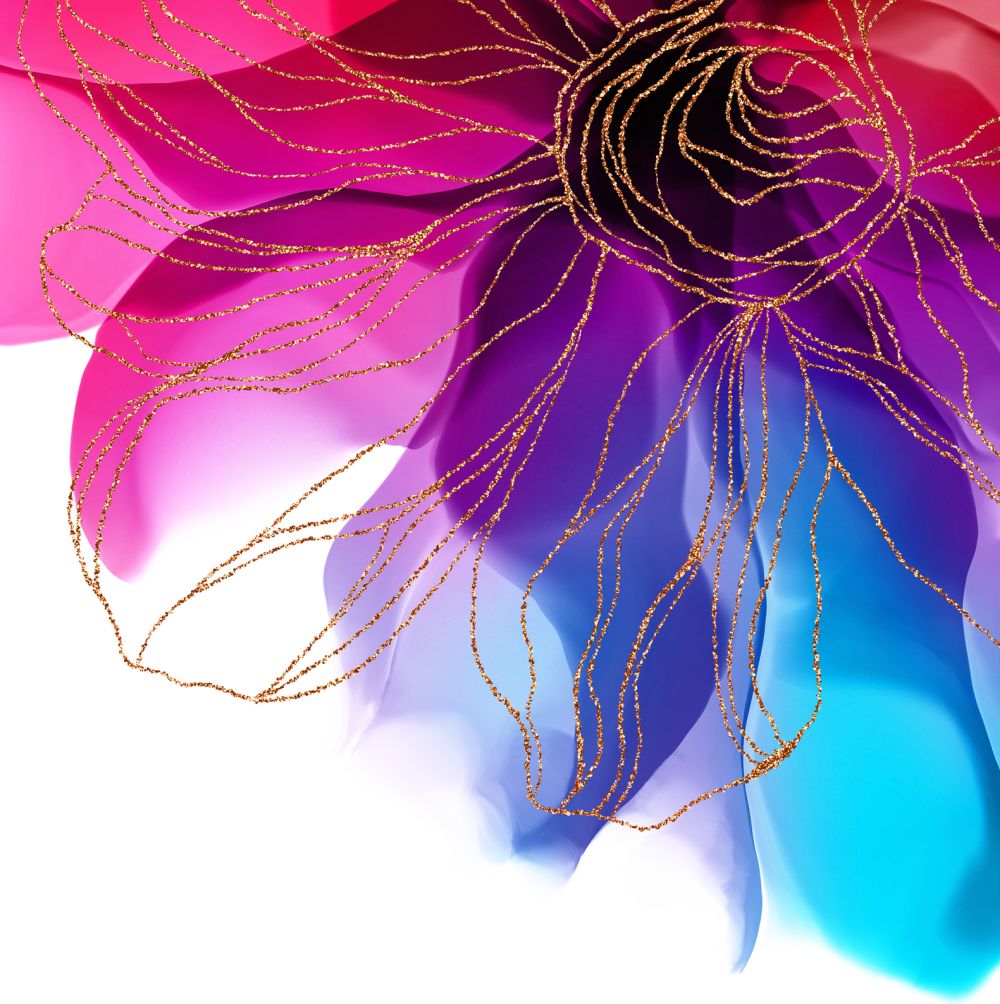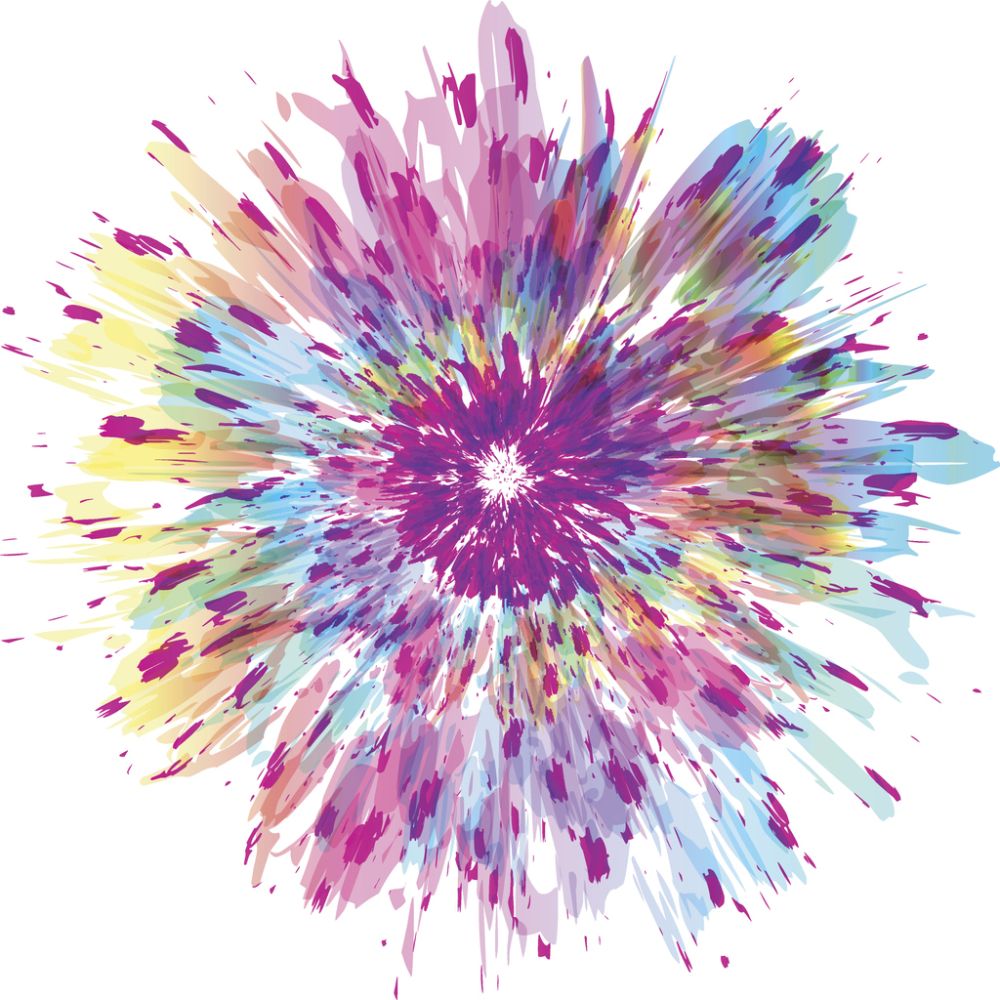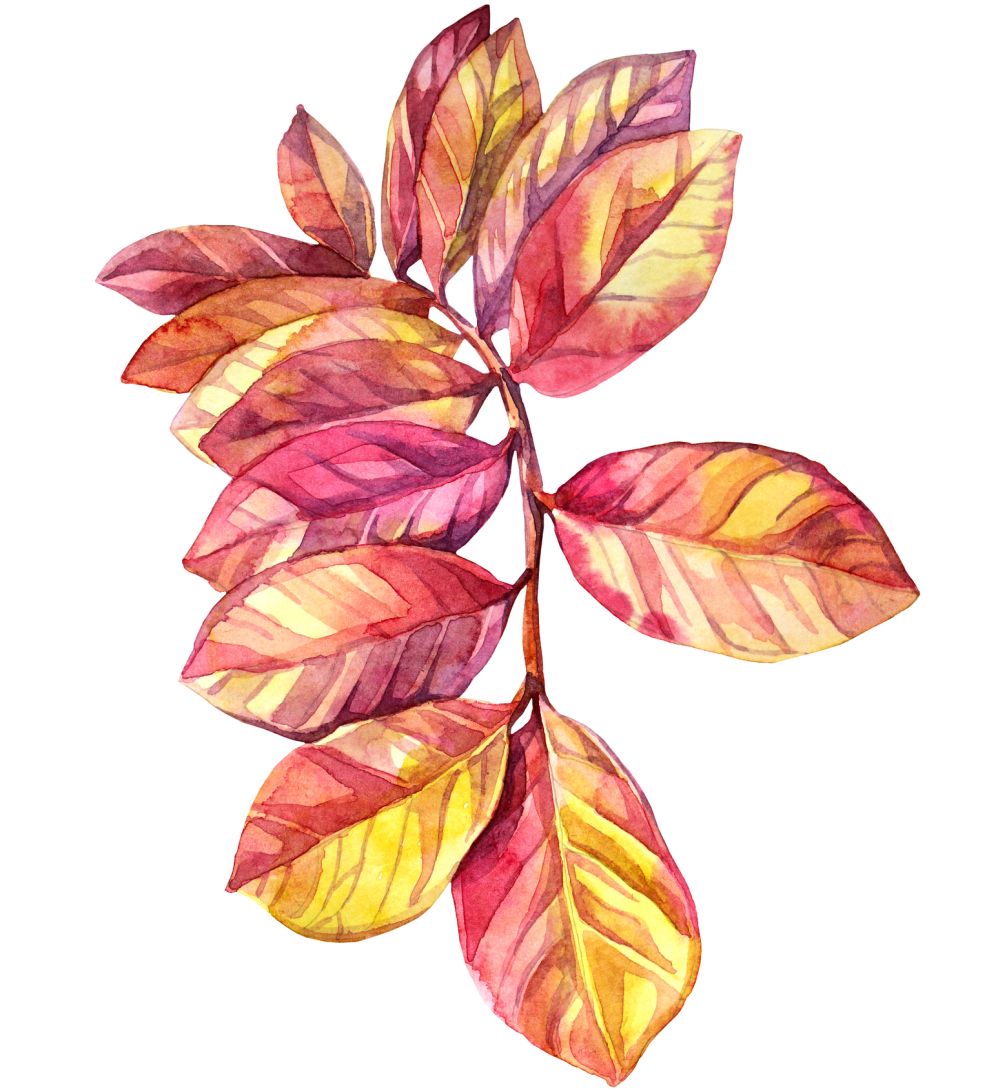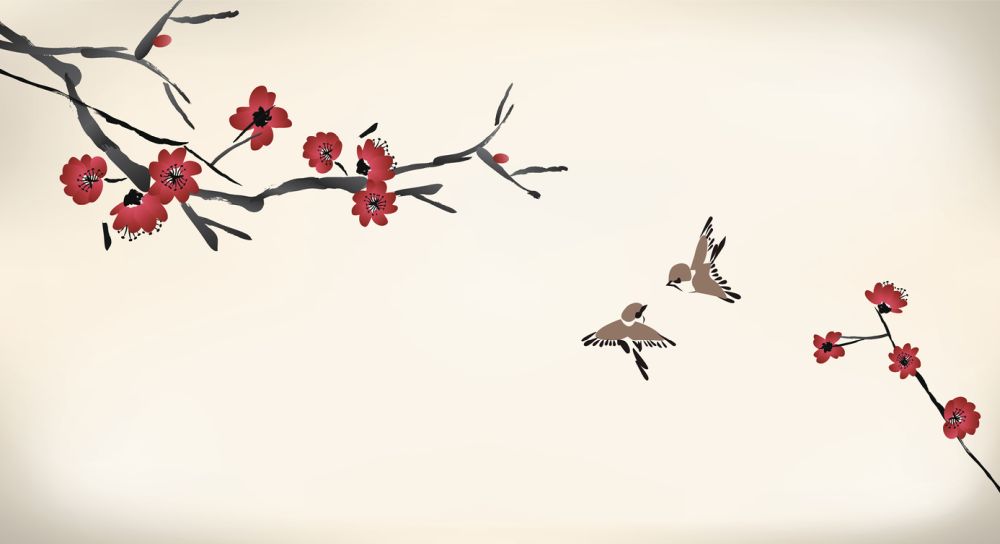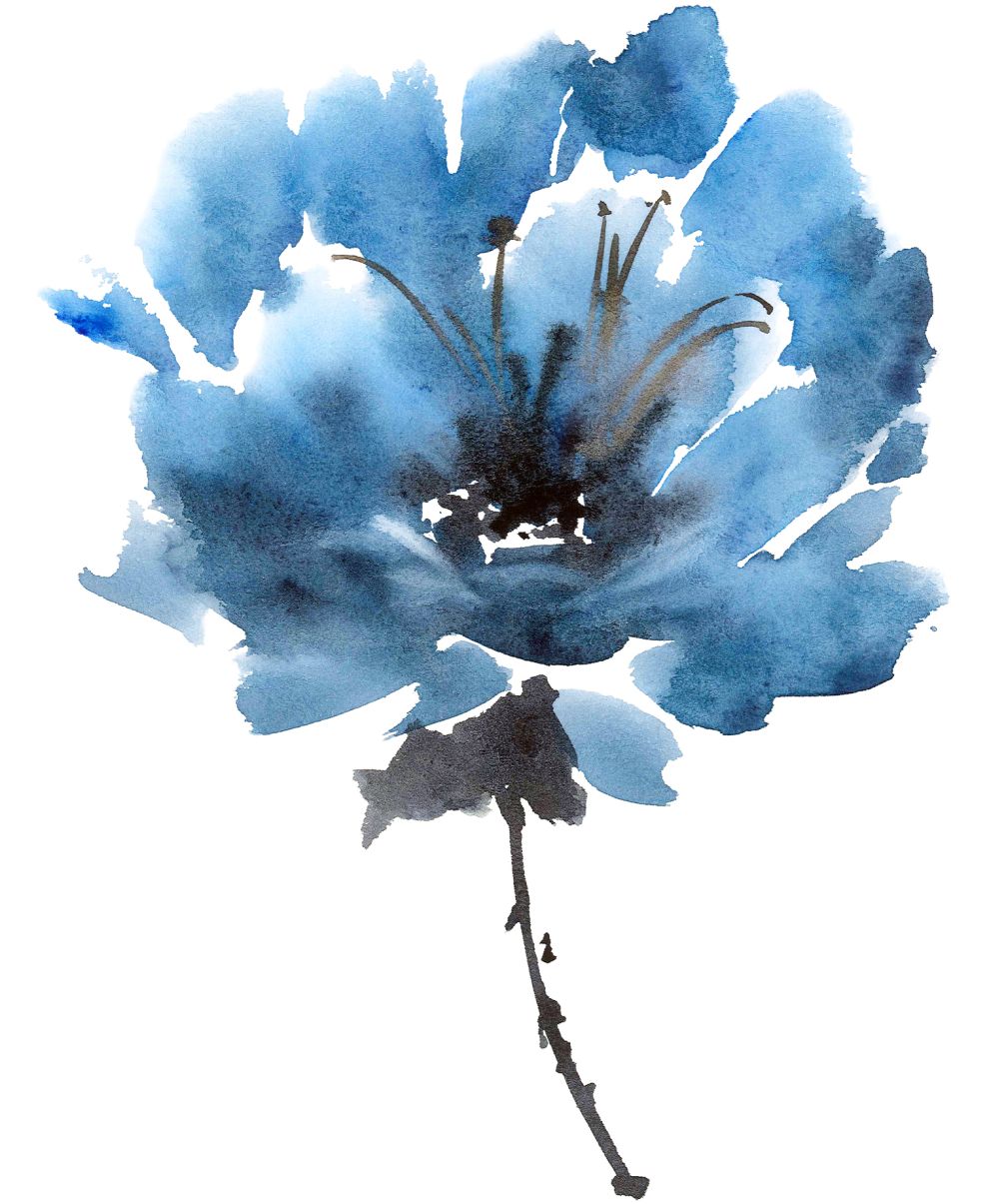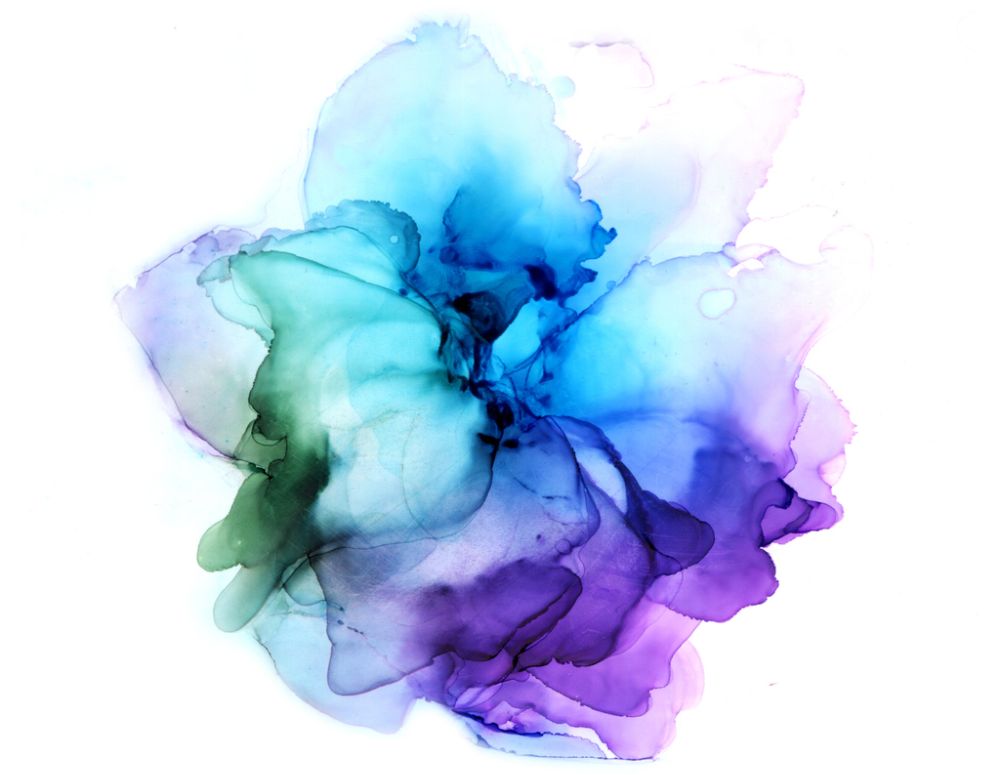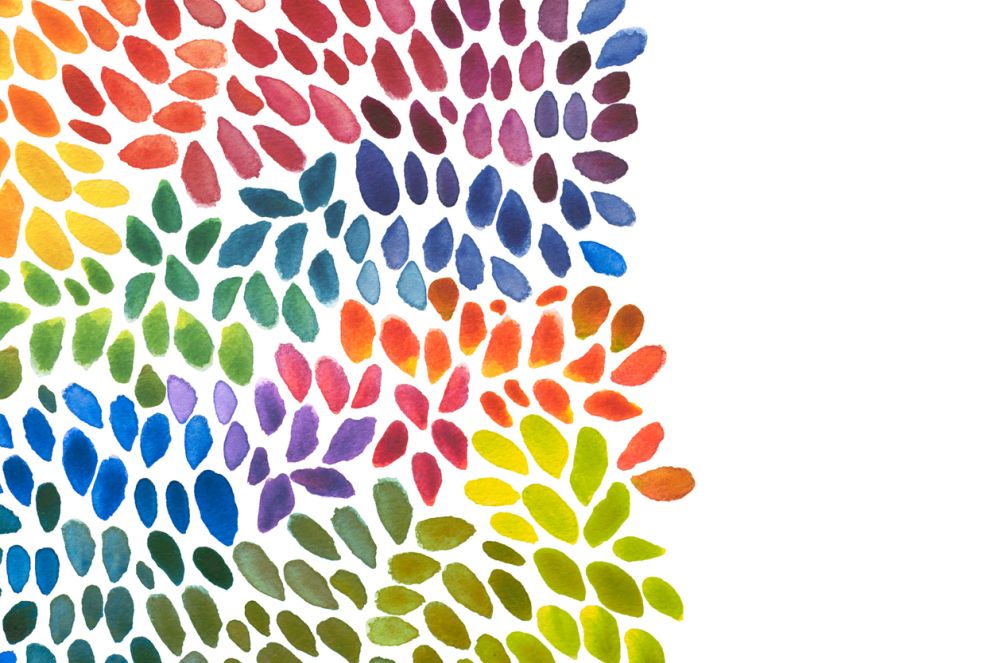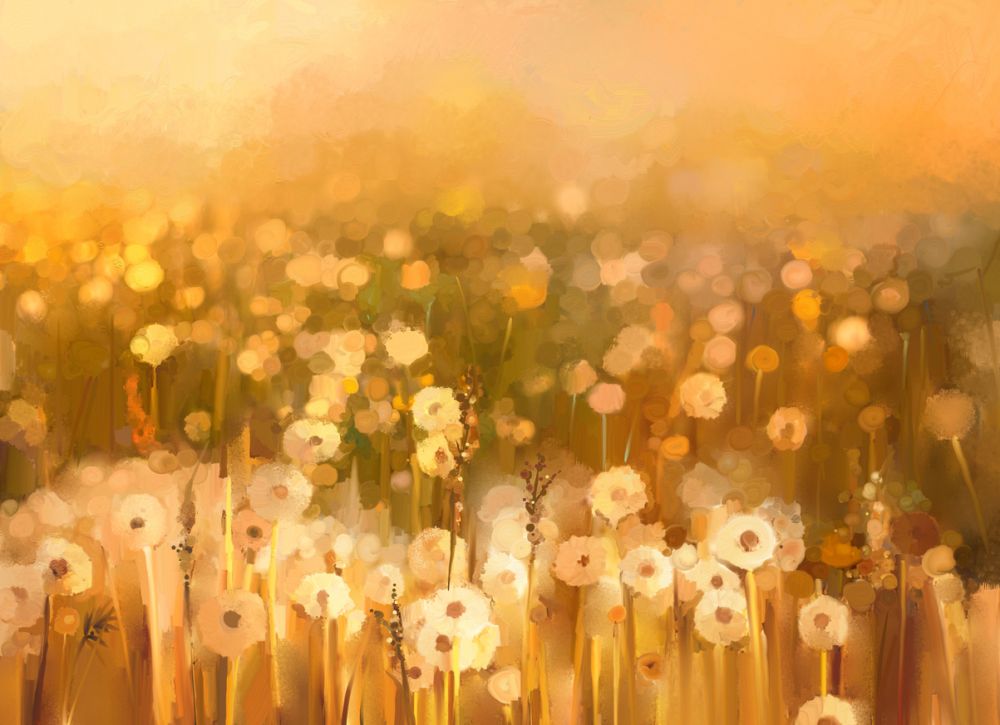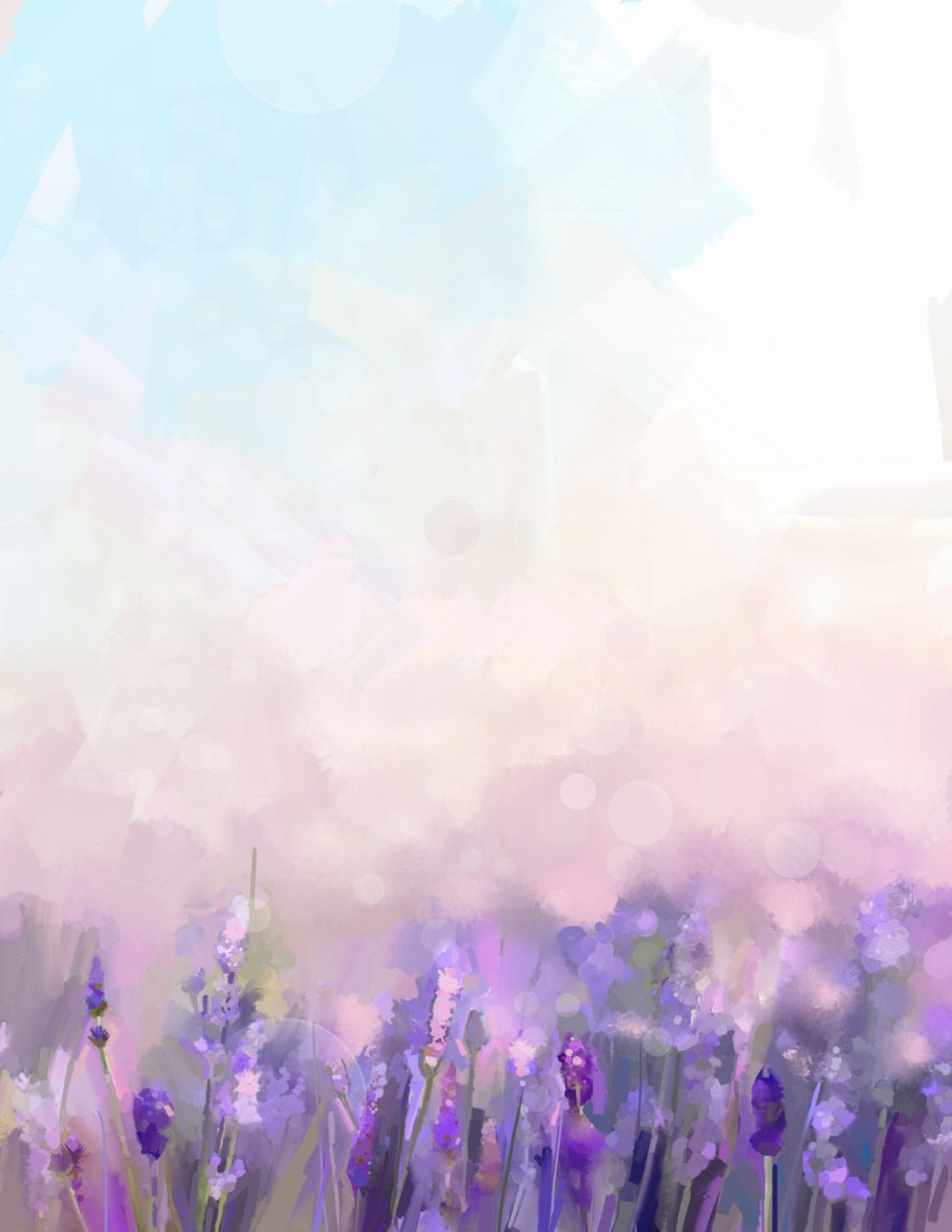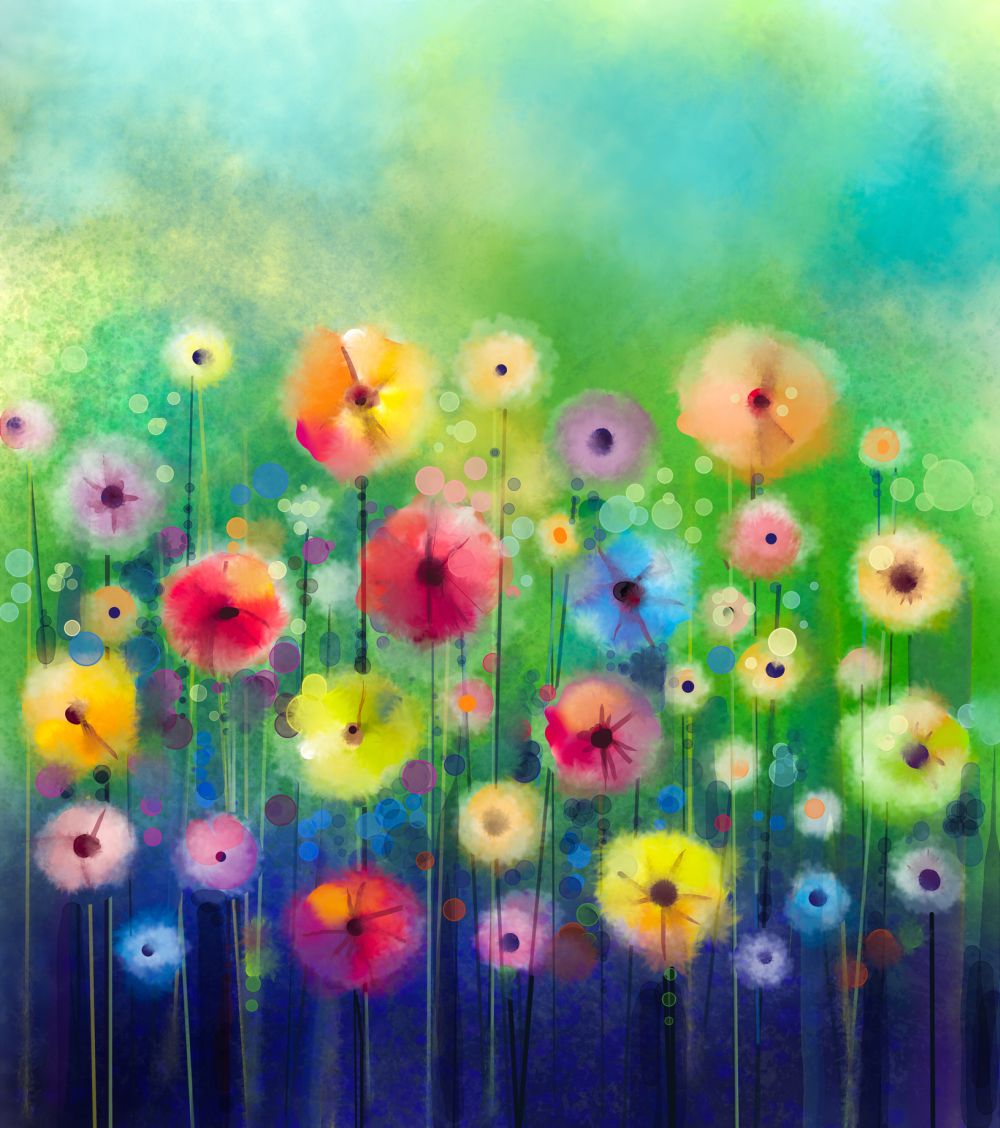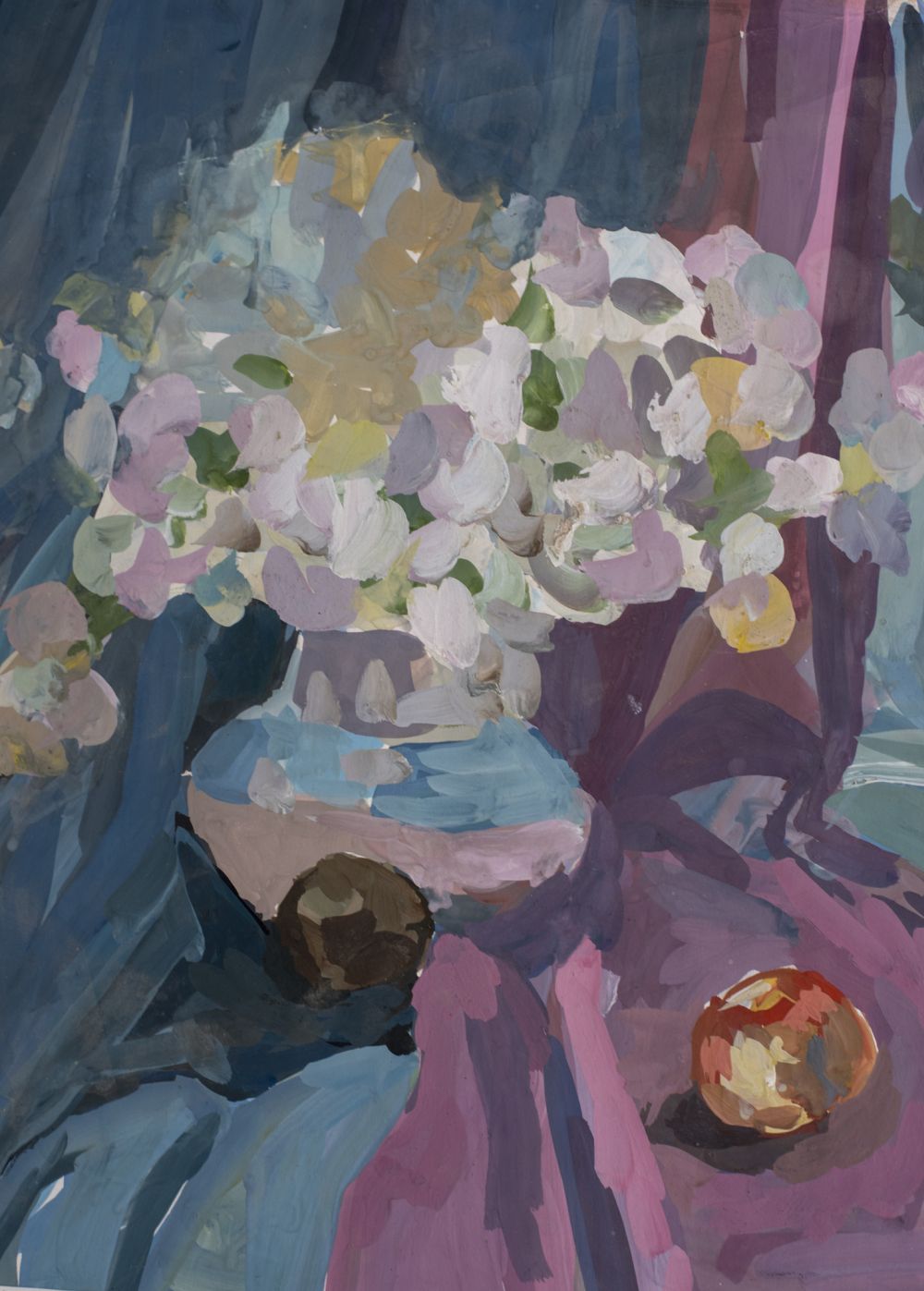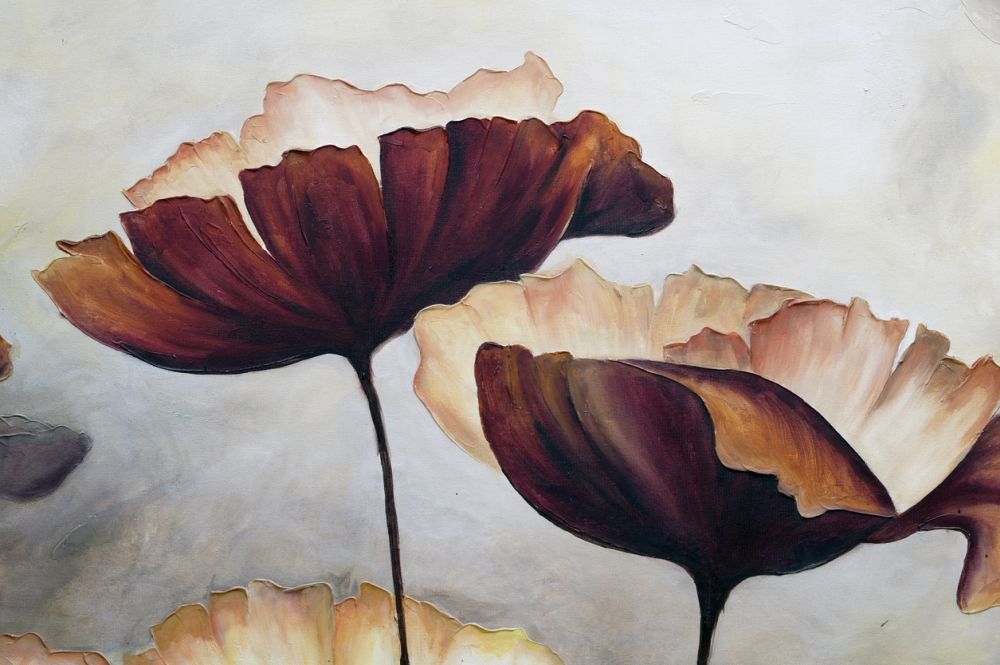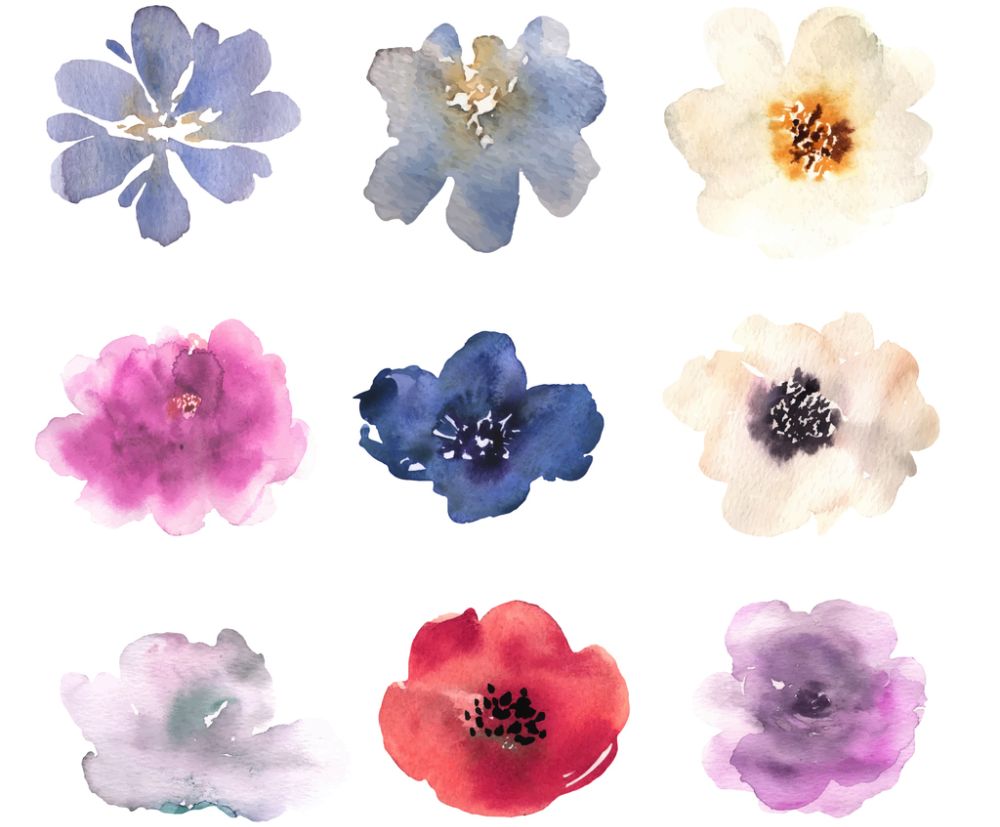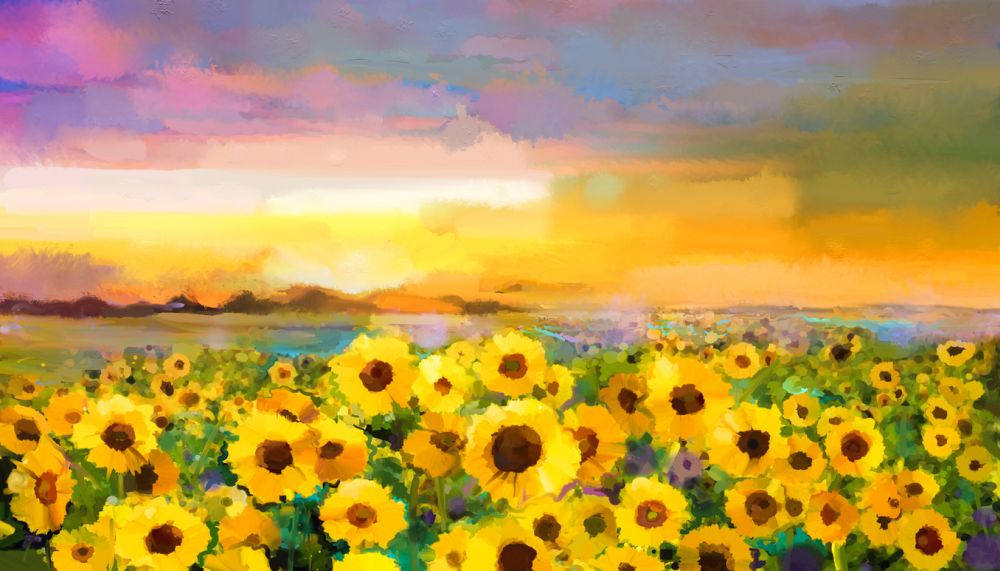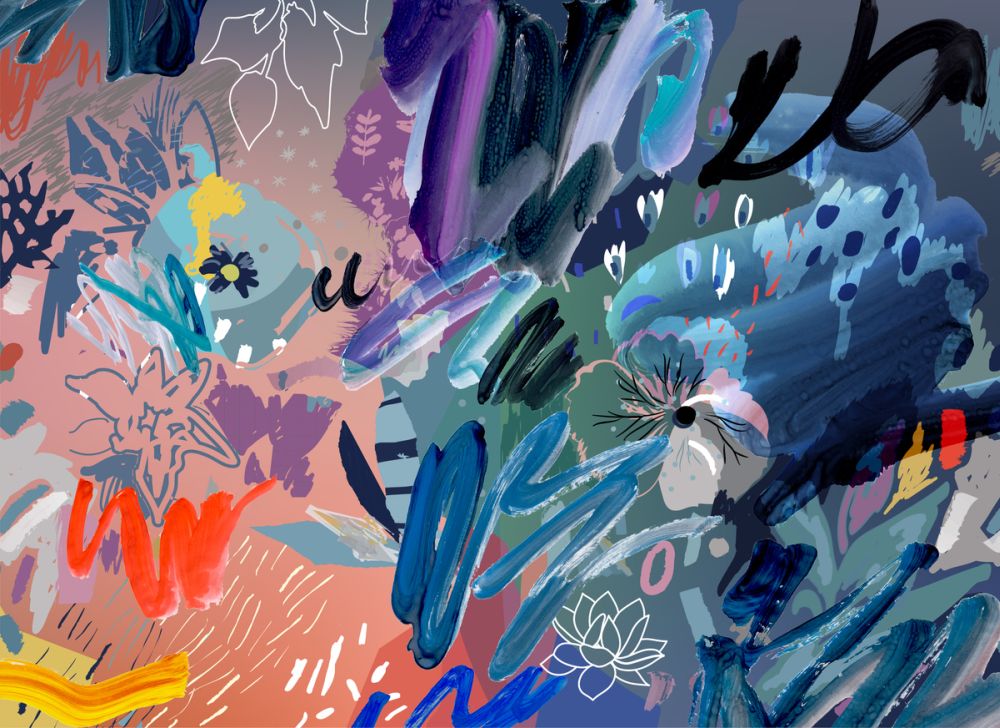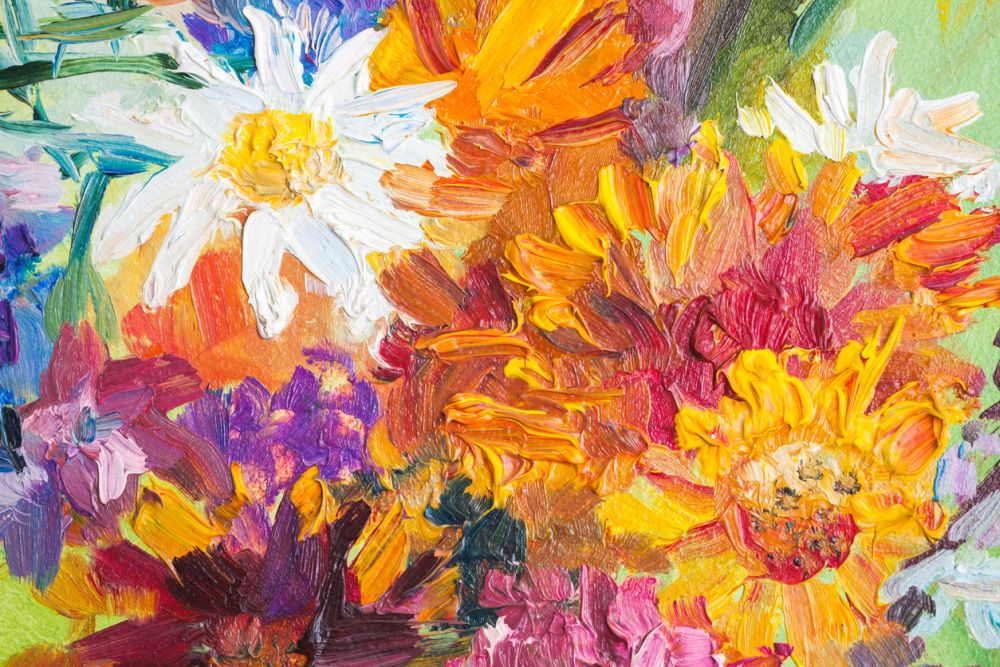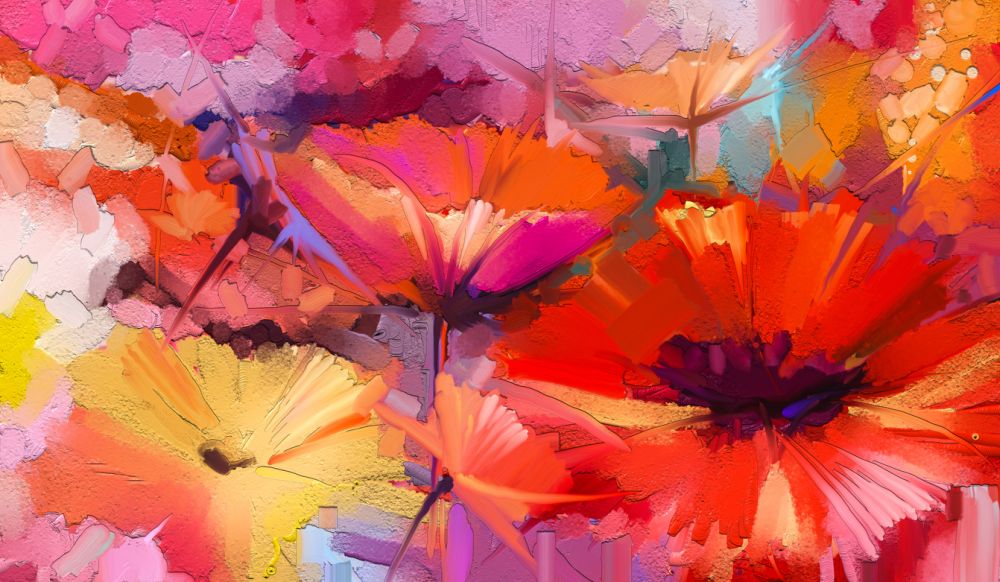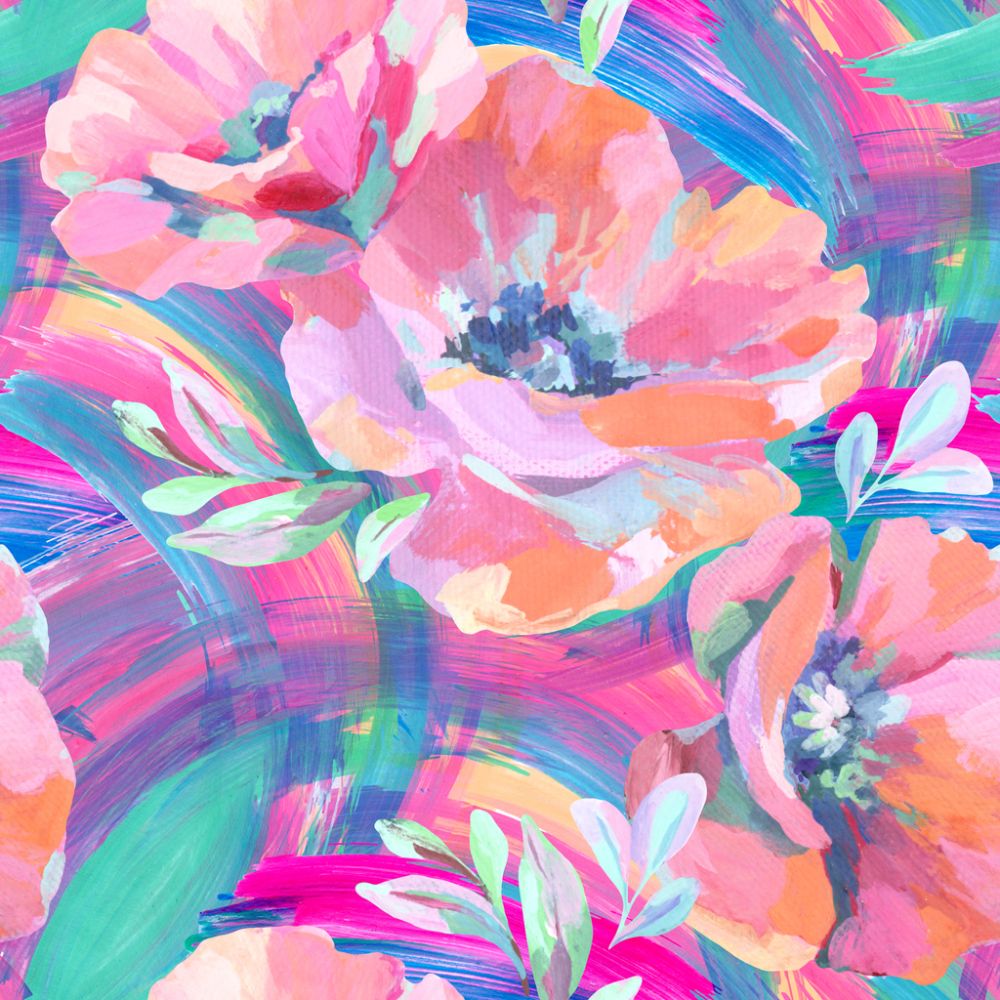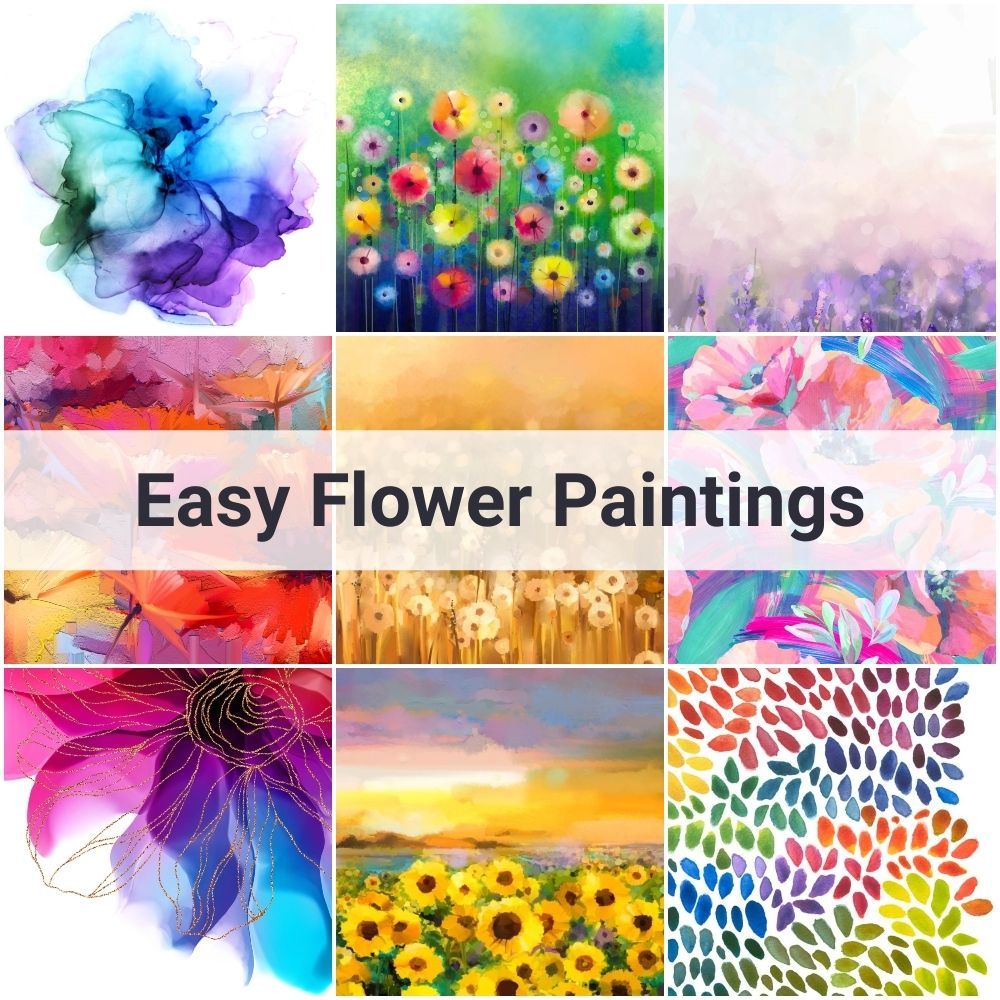35 Stunning Flower Paintings for Novice Artists
Flower paintings add a touch of beauty and sophistication to any home decor, and they are fantastic homemade gifts for your loved ones. Whether you’re a novice or an experienced artist, you can create works of art that will brighten any room.
Painting is a relaxing activity that helps you express yourself, regardless of what you paint. And many people consider it to be a form of therapy.
Flower paintings are an excellent way to enjoy the outdoors and get creative – especially if you’re allergic to flowers and can’t go outside to enjoy the real deal. You can also use this activity to teach children about different flower types, colors, and shapes.
Charming Flower Paintings for Beginners
We’ve compiled a list of creative ways to paint flowers without too much effort. So, if you’re looking to add a splash of color to your canvas, browse the following methods and designs:
1. Smear Technique Poppies – Acrylic Flower Painting
For this gorgeous design, you’ll need acrylic paints of various colors, a canvas, and a few brushes. Using brushes of several sizes helps you create different effects.
- Set your canvas up on an easel or somewhere you can easily reach it.
- Dip the larger brush into some red paint and smear it across the top of the canvas.
- Then add some yellow and green to create a varied color palette.
- Next, use the smaller brush to add details to the flowers.
- Finally, add some highlights and shadows to make them look realistic.
- Don’t be afraid to experiment with different colors!
- Furthermore, try to combine broad strokes with short ones to achieve a nicer-looking effect on your acrylic flower painting project.
2. Oil Painting Red Poppies – Flower Paint Idea
You’ll need oil paints, a canvas, and a few brushes for this flower paint idea. Again, using different size brushes can help create unexpected effects.
Oil painting is a bit more difficult than other methods, but the results are definitely worth it. Make sure to properly ventilate the area, as the fumes from the oil paints can be harmful.
- To start, paint the background of your canvas with a light blue color.
- Next, add some red to the mix and paint the petals of the poppies.
- Be sure to use short strokes for a more realistic effect.
- Lastly, add highlights and shadows to finish off the painting,
3. Painting Flower Bouquet Idea
This beautiful painting flower bouquet idea can be easily recreated with oil paints. You’ll need a canvas, some oil paints, and a few brushes.
The best way to start is by painting the background. In fact, this is a tip you should consider for all of your paintings, not just these ones.
- Begin with the background and make sure to choose colors that blend and contrast nicely.
- Then start painting the flowers using a variety of colors.
- Use a combination of broad and short strokes but make sure to keep the brush’s direction steady; suddenly shifting direction makes your painting look messy.
- Next, add some highlights to the flowers with white paint.
- Be sure to mix different colors to create a varied palette.
- Lastly, add shadows to the flowers for more depth and realism in this XXX.
4. Poster Art Floral Template with Paint Strokes – Flower Canvas Painting
If you’re a beginner, this flower canvas painting is a great design to start with. It’s simple, and the results are still beautiful. You’ll need some paint, paper (or a canvas), and a brush.
- To start, paint the background of your canvas with any color you like. The reference photo we used has a dark background, but it shifts to a lighter shade to the left. This gives it a nice effect, so don’t be afraid to experiment with various colors until you get it right.
- Be sure to use light and dark colors to create depth and contrast.
- Next, use a light color to paint the flowers. Don’t worry about making them look perfect, as the goal is to make them look handpainted.
- Lastly, add some details to the flowers with a darker color.
Voila! You just created a floral pattern worth hanging on a wall. Doesn’t it look marvelous? You know it does.
5. Sunflowers on a Field – Flower Oil Painting
This flower oil painting is incredibly easy and can be completed in just a few simple steps. You’ll need oil paints, a canvas (obviously), and a few brushes.
- To start, paint the background of your canvas with light yellow.
- Then, paint the sunflowers in the middle using darker yellow.
- Be sure to use short strokes and that they’re all facing the same direction.
- Lastly, add highlights and shadows to the flowers for more depth and realism.
Instead of using a simple background, why not try to give it a bit of depth and detail? For instance, you could try painting the sky with different shades of blue.
The clouds could be white, and the sun could be a bright yellow. It’ll take a bit more effort, but it’ll definitely be worth it in the end.
As before, make sure to ventilate the room you’re working in properly. You wouldn’t want to end up with a headache because you didn’t take the proper precautions.
6. Floral Variety – Watercolor Flower Painting
This next design is perfect for anyone who wants to try their hand at watercolor painting. Furthermore, it holds not one, not two, but nine different flowers you can try your hand on.
It’s a bit more complicated than the others, but it’s still manageable for beginners. For this watercolor flower painting idea, you’ll needpaper or canvas, watercolors, and a brush. You don’t need to paint the background for this one, so feel free to leave it blank.
- Start by painting the flowers with the lightest colors.
- Then, use a slightly darker color to create depth and variation.
- Lastly, add some shadows and highlights to the flowers for more realism.
There you have it – nine different watercolor flower paintings that are perfect for any occasion.
A little tip: while painting with watercolors, make sure not to add too much water to the paint. If the paint is too diluted, it’ll be difficult to control, and you’ll likely end up with a mess on your hands.
7. Painting Poppies with Textures – Poppy Flower Painting
Painting with textures is a rather complicated technique, reserved for more experienced painters. However, it can be done with a bit of practice and the right direction.
Here’s what you need to do for this poppy flower painting idea:
- Paint the background of your canvas with a light color.
- Next, use a darker color to paint the poppies.
- Make sure to use short, controlled strokes and to vary the direction of the brushstrokes.
- Then, use a textured brush to paint over the poppies. This will give them a more realistic look.
- Finally, but not least, add highlights and shadows to the flowers for more depth.
- Alternatively, you can use a different texture for each poppy. For instance, you could try using a hairy brush for one poppy and a spongy brush for another.
8. Still Life – Flower Vase Painting
This next design is perfect for beginners. Although it looks a bit heavy and loaded, it’s actually a very simple painting.
As you can see, the flowers here are merely round(ish) brush strokes. Each flower has a particular shape and color, which makes it easy to work with depth and shadows.
For this flower vase painting, you’ll need some paper or a canvas, gouache, and a round brush:
- Create a scene for your flowers, whether it’s a backdrop, a wall, or an open window.
- Make sure to adapt the color palette to the background. You wouldn’t want to choose a window to oblivion or a bright-white backdrop, now would you? Keep things real.
- Start painting the vase; you can use various colors for this, but we recommend you keep it simple.
- Now start painting the flowers. Remember to use different colors for each petal and to vary the brushstrokes.
- If you’re satisfied with the way your painting is turning out, you can leave it like that. However, it’s a good idea to add a bit of depth to the painting through shadows and highlights.
- Since this painting is not exactly realistic, you can play with different shades. Try painting a bright object for contrast, such as an apple.
9. Oil Painting of Daisy Flower Field – Flower Field Painting
This beautiful oil painting is of a daisy flower field. Just look at it; bright, playful, and it seems to blend in right into the blue sky above and behind it.
As you can see, the flowers are in full bloom, while the colors are bright and vibrant. To create a flower field painting like this, you’ll need paper or canvas, oil paints, brushes, and an easel.
- Start by sketching out your design on the canvas; this can be a simple or detailed sketch, depending on your preference.
- Once you’re happy with the sketch, paint the sky with a light blue color.
- Next, paint the flowers in any colors you want – whether you want to make them look realistic or not.
- Remember to add variety and depth by painting the petals in different ways.
- Last but not least, add clouds just above the flowers. Make sure to blend the flowers into the clouds gently, as if they’re disappearing into the scenery; this will give your painting a more natural look.
10. Multicolored Flowers on Green Background – Watercolor Flower Paintings
Are you just getting started with painting flowers? If so, this next painting design is perfect for you.
As you can see, the background consists of a gradient that builds up from a deep, dark blue to vivid green, then slowly fades into a blueish-green hue again.
On top of it, several brightly-colored flowers have been sketched in. To create one of these watercolor flower paintings, you’ll need paper or canvas, watercolors, and a paintbrush.
Start by painting the background with the gradient of your choice. For the sake of keeping this as simple as possible, try using the gradient from our reference photo.
Then, add the flowers. We recommend using a light blue for the sky, red and yellow for the flowers, green for the leaves, and dark purple or black for the shadows.
11. Oil Painting Lavender in the Meadows – Purple Flower Painting
This next painting is of a beautiful field of lavender flowers. As you can see, the colors are soft and soothing, with a gentle gradient that flows from purple to blue.
The sky is clear and the sun is shining, adding a touch of warmth to the painting. However, there’s no sun in the painting, and its presence is only implied by the luminance of the scenery.
As opposed to some other paintings on our list, you won’t need a sketch for this one. Just close your eyes and try to picture the lavender field.
Don’t just picture it, try to feel it and frame it; instead of watching it from afar, you’re almost right in the middle of it. With that in mind, make sure the flowers don’t go past the bottom quarter of your canvas.
This painting is still about the field of lavender flowers, and the sky should only be a background. However, as you can see in the photo, most of the field is implied, not represented.
Now that you have a general idea of how your purple flower painting is going to turn out, it’s time to start:
- Paint the sky using light blue.
- Then, add the lavender flowers in various shades of purple.
- Make sure to use a light hand when painting the flowers, as you don’t want them to overpower the sky.
- Add the green leaves and stems with dark green.
- Finally, use a light purple or pink to create flower highlights.
12. Warm Daisy-Chamomile Flower Field – Flower Paintings
This painting is of a blooming field of chamomile and daisy flowers. The colors are warm and cheerful, with a soft blurry background that aims to capture a summer’s afternoon.
You can paint the background with strokes of yellow, but make sure to throw in some green and light brown, too, if you want to recreate the decor above.
For the flowers, mix yellow and white and try blending them with the background. The leaves should be painted with a light green color and the stem with a brownish-green tone.
For flower paintings like this one, try picturing a field of dandelions during golden hour, bulbous and just about to shake their fluff; that’s how you want your flowers to look. Instead of overloading the flowers with colors, it’s best to make them translucent.
Furthermore, as the reference photo shows, each flower should be unique. For this to happen, you can work on applying various levels of pressure and playing with color dilution.
Don’t be afraid to experiment with various techniques and mediums, too. If you’re feeling extra adventurous, try using watercolors instead of oils; you’d be surprised by the varying outcome.
13. Short Brush Stroke Petals – Abstract Flower Painting
This is not a flower painting per se; think of it rather as an exercise to help you paint flowers easier in the future.
This painting is made of various short brush strokes in different colors and sizes; the idea is to create a sense of petals. If you’re having trouble picturing it, just take a look at the reference photo. As you can see, the petals are roughly the same size and shape.
However, if you want to work on your brush techniques, you could make some long and thin, and others round and plump. The colors range from purple to pink to yellow, with various shades in between.
However, as this is an abstract flower painting, you don’t have to stick to realism. You also don’t have to care much about how it looks if you’re not planning to frame it afterward.
If you do want to keep it, you could cycle colors harmoniously by using a color palette. That way, when you perceive it as a whole, your petals should resemble a gradient of sorts.
14. Delicate Flower Watercolor Paintings in Blue and Violet
This painting is of a delicate flower in blue and violet tones. It was painted with watercolors and features a soft background.
Well, here’s the trick, the background isn’t actually soft, and you can actually leave it blank.
The fact that the artist carefully painted the flowers in watercolor and manipulated the intensity through dilution gave us a sense of softness. Do you see how the canvas is still visible through the petals? That’s all about dilution.
The petals are curved, and the center of the flower is accentuated with dark blue. If you want to recreate flower watercolor paintings like this one, we suggest using a wide tip brush and watercolors in similar shades of blue and violet.
- Start by painting the background with light blue.Alternatively, you could leave the background blank; it would actually be better if you did.
- Paint the flower petals with a mix of blue and violet.
- As opposed to other paintings, you don’t need to work on the highlights of the flower with white color. Instead, make sure to dilute the parts you want to highlight. That way, you reduce their opacity and the canvas (white) should be visible from underneath.
- Also, make sure to add darker tones around the edges to give your painting depth.
15. Watercolor Peony – Blue Flower Painting
This painting is of a blue peony and is quite easy to reproduce. It has a white background and was painted with watercolors. The flower is simple but elegant, featuring just the petals and no leaves.
If you’re looking for an easy blue flower painting to start with, we suggest you try this one. All you need is some white paint and watercolors in different shades of blue.
- Begin by painting the background with white paint and then add the blue petals.
- Alternatively, you could just leave the canvas empty instead of painting it white.
- Make sure to use light and dark blues to create contrast and depth.
- As before, we recommend you use a wide tip brush for this painting. That way, you’ll be able to create the petals without much effort.
- Use black to create the flower’s stem, stigma, and stamen.
If you’re using watercolors, go easy on the water since you don’t want your painting to look all faded.
16. Cherry Blossom Painting with Birds
If you enjoy the sight of cherry blossoms and birds, then you’ll definitely love this painting. It’s quite easy to do and only requires white paint and watercolors in black and red.
The background is creamy beige, and the cherry blossom painting features birds perched on branches.
- We recommend you start by painting the background. Or you can purchase textured colored paper.
- Then, add the branches of the cherry blossom tree with a black pen.
- Start painting the flowers in light pink or red.
- Add darker shades to create depth.
- Don’t forget to add the birds using black and red watercolors.
It’s best to use a fine-tip brush for this painting. Also, don’t worry about recreating the painting from our reference photo perfectly.
The photo is only there to inspire you, so make sure to add your personal touch – maybe even try to paint the birds in a different position or use a different type of bird – the sky is quite literally the limit.
17. Pink and Yellow Leaves – Easy Watercolor Painting Ideas for Beginners
While this is not a flower painting per se, familiarizing yourself with leaves will only help you develop your painting skills. After all, leaves are an important part of any flower painting.
This design was created with watercolors and has a white background, where the leaves are painted in shades of pink and yellow, with purple accents. It’s an easy watercolor painting idea for beginners.
- It’s best to start working on the background. Alternatively, you can use textured colored paper.
- Next, paint the branches dark purple and the leaves pink and yellow using watercolors.
- Don’t forget to add the purple accents using a darker shade of purple.
We recommend using a thin brush for this painting to create the delicate details of the leaves accurately. Also, a good practice is to try figuring out the scenery’s lighting; if you put too much yellow in the leaves, it might look like you’ve got several sources of light.
Another good idea is to go easy on the accents; if you darken the leaves and branches too much, you might end up with a much-sharped image than you’ve intended.
18. Abstract Flower Paintings with Color Splash
This gorgeous painting looks like the artist decided to drop several cans of paint on a white canvas. The result is an abstract flower that’s sure to make a statement.
You too can create abstract flower paintings similar to this one using acrylics on a white background. The petals are literally an explosion of shades, including pink, purple, blue, and yellow.
Given that this painting creates chaos and manages it beautifully, you can feel free to use any color you want.
- We suggest you begin by painting the background or purchasing textured colored paper – unless you’re comfortable with a blank background.
- Then, using a thin brush, start painting the petals with different shades of your chosen colors.
- Remember, it’s an abstract painting so there’s no need for accuracy. In fact, the more creative you get, the better it will look.
Using a large canvas will also yield nicer-looking painting that will require less accuracy on your side.
19. Alcohol Ink Flower Paintings
This beautiful flower was painted with alcohol inks and has a white background. The petals are a mix of reds, pinks, purples, and blues with elegant gold lines that look like veins.
You can see that the colors mix well and, even though the whole painting is a bit chaotic, it’s quite soothing. Moreover, it’s easy to recreate flower paintings like this one, even if you’re just starting out; you just need alcohol inks and a blending tool.
It’s possible to paint the petals in any color, although we love the colors shown in this image. Whatever you pick, ensure they arebright and powerful colors instead of bland.
Working with alcohol inks can be a bit tricky, but you’ll be able to create masterpieces like this one with a little practice.
20. Blotch Flower Shapes – Easy Watercolor Paintings to Copy
If you have absolutely no clue on how to draw flowers from scratch, try this method – this painting was created with purple watercolor and has a white background.
The petals are blotchy circles in different shades of purple, and the leaves are basically non-existent. But you can make them from simple green shapes.
It’s an easy watercolor painting to copy, making it ideal for novices or non-artists who don’t have a lot of time on their hands.
- Prepare watercolors and a thin brush.
- Paint the background white and let it dry. Alternatively, you could leave the canvas blank, which is what most people do. However, if you want more control over the background, paint it.
- Once it’s dry, start painting the petals with different shades of purple. Don’t worry about being too accurate, just try to make the circles look like blooming flowers.
- Finally, paint the leaves green and let it all dry.
21. How to Paint a Flower Easily
Ruffled Daisy has prepared a simple tutorial that shows how to paint a flower the easy way. Grab your colors, create tiny works of art, and display these beauties throughout the warmer months, in gallery walls, or in nurseries.
22. Lavender Flower Painting
Painting lavender is an innovative way to experience the beauty and relaxation of the lavender plant. Feeling Nifty has easy-to-follow instructions to help you create a beautiful lavender flower painting that will transport you to a field of purple in no time.
23. Cotton Swabs – Acrylic Flower Paintings
We found this gorgeous floral piece on YouTube, courtesy of Angela Anderson, which teaches you how to effortlessly make acrylic flower paintings using cotton swabs, so be sure to check it out.
24. Cool Pumpkin Painting Ideas with Flowers
We’re swooning for this cool pumpkin painting idea from craftberrybush. Over there, you can learn how to recreate one of these beauties to display in your home throughout the fall.
In the foyer, on the front porch, whatever the case – fall florals are always a good idea, so make sure to check out the pumpkin painting guide.
25. 5-Minute Bubble Painting Hydrangea – Easy Flower Paintings for Beginners
Did you know you can paint using bubbles? Here’s a fantastic example for designing hydrangeas using bubbles. Check out A Piece of Rainbow to learn the step-by-step process for easy flower paintings for beginners involving this elementary technique.
26. Splatters – Canvas Flower Painting Ideas
Splatter paint projects are fun, too. Over at Cloth Paper Scissors, you’ll learn how to turn splatter paint into a field of florals. These would be cute canvas flower painting ideas for girls.
27. Flower Print Scrape Painting
Scraping is a trendy art technique that’s been taking the blogosphere by storm. Playful Learning took florals and mixed them with this new technique to create excellent results. Again, this is a fun one for you and your pals to get together and share.
28. Rose – Flower Watercolor Painting
Anna Mason Art grabbed some watercolor and created a stunning rose flower watercolor painting. You can do it too – just hop on over and check out the tutorial. Watercolor may be our favorite since it’s so delicate and romantic.
29. 5-Minute Floral Patterns
This floral pattern will take only 5 minutes to create. Don’t believe us? Visit Cut Out + Keep to see how to get it done on canvas or fabric.
30. Peony – Easy Flower Paintings
Skillshare knows that peonies are widely loved, so it prepared a tutorial with easy flower paintings for inspiration. Even novice artists can recreate these flowers; you’d be surprised by how straightforward the instructions are.
31. Lilly Pulitzer Inspired Flowers – Easy Flower Painting Ideas
Lilly Pulitzer is known for her floral designs. You can recreate them on your walls or decor pieces with just a little help from YouTube, thanks to Jane. Hop on over now and make something new for your home office using these easy flower painting ideas.
32. Watercolor Flowers for Beginners – Simple Flower Painting
Burlap and Blue helps beginners learn how to draw watercolor flowers using this simple flower painting design. These petals are super easy to make and will be a great way to teach your kids to paint. And then you’ll want to showcase them around the house.
33. One-Stroke Hydrangeas
All you need to know is one stroke to make these hydrangeas. And that one stroke can be found at Lynda Makara. These are a bit more whimsical than their predecessors.
34. Swirly – Simple Flower Paintings
We love these swirly flowers – they look like they were plucked right from a fairy-tale, don’t you think? Check out Make And Takes for more information about these simple flower paintings.
35. Simple Daisy – White Flower Painting
Finally, learn how to whip up some simple daisies, thanks to this white flower painting idea. You can use this technique for a multitude of projects using various materials. Grab the details at Flower Patch Farmhouse.
Final Thoughts on Flower Paintings
All things considered, painting flowers is a fun and easy way to show your creative side. Plus, you can use any colors you want and be as creative as you want.
We recommend beginners start with acrylics on a white background, using thin brushes to paint the petals in different shades of the same color.
However, if you’re feeling adventurous, you should try watercolors, alcohol inks, or even just basic pencil drawings. No matter what you choose, it’s an excellent way to relax and express yourself.
We hope you enjoyed these easy flower paintings and that you’ll be inspired to try them out for yourself!
